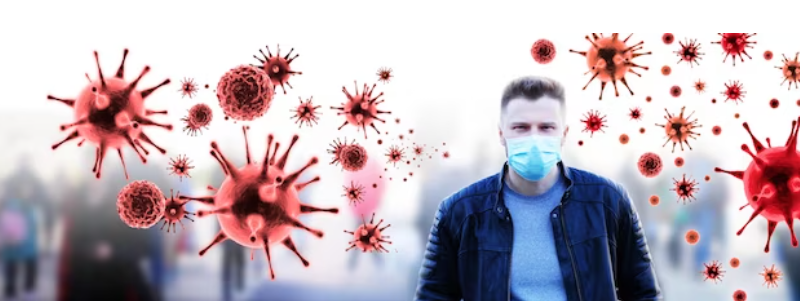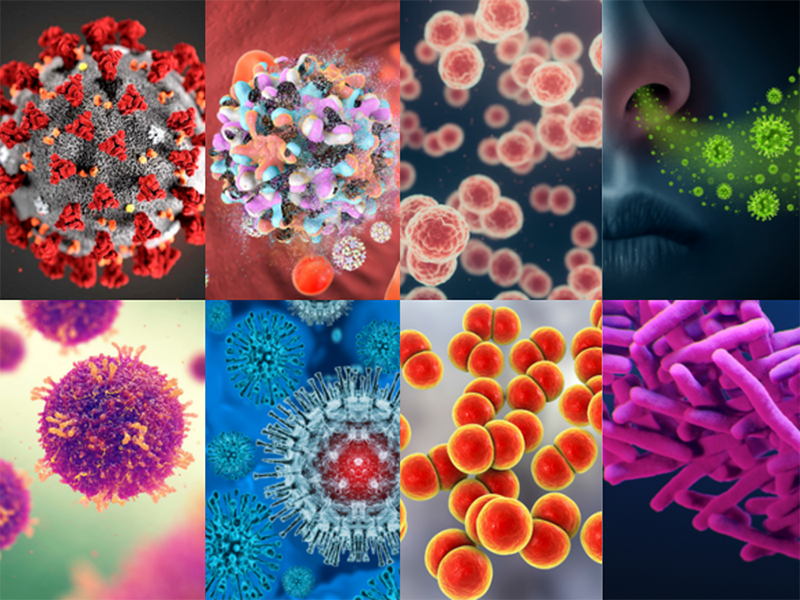Infectious Diseases in Adults :- Infectious illnesses account for one-third of all fatalities in adults aged 65 and older. The usual warning signs and symptoms, such as fever and leukocytosis, are frequently missing in the elderly, making early detection more challenging. The only presenting issue in an older patient with an illness can be a change in mental status or a reduction in function. Pneumonia is estimated to be the cause of 90 percent of deaths in people 65 and older. The elderly are primarily affected by influenza-related mortality. The most frequent cause of bacteremia in older persons is urinary tract infections. Asymptomatic bacteriuria occurs frequently in the elderly; however, antibiotic therapy does not seem to be effective.
The elderly are particularly affected by the recent surge of antibiotic-resistant bacteria as they are more likely to contract infections in hospitals and other institutional settings. It is difficult to treat colonization and active infection; careful commitment to hygiene precautions is required to stop the spread of resistant microorganisms. Despite improvements in antibiotic treatment, infectious illnesses continue to be a leading cause of death in older persons. Physicians face distinct challenges while treating infections in elderly persons due to the diagnostic and therapeutic complexities.
Fever in Adults
Fever is a raised body temperature that occurs when the body’s thermostat—located in the brain’s hypothalamus—resets at a higher temperature, typically in response to an illness. Hyperthermia is the medical term for elevated body temperature that isn’t brought on by a reset of the thermostat. Several body parts allow for the measurement of body temperature. The most common sites are the rectum and the mouth. Other sites include the forehead, ear and ideally Armpit. A digital thermometer is typically used to measure temperature.
Oral temperatures are considered elevated when
- In the morning, they are greater than 99° F (37° C).
- At any moment after the early morning, they are greater than 100.4° F (38° C).
- They are higher than the known average daily temperature of an individual.
Causes of Fever in Adults
Substances that cause fever are known as Pyrogens. Pyrogens can originate from both inside and outside the body. Examples of pyrogens created outside the body include microorganisms and the compounds they produce such as toxins. Pyrogens formed inside the body are usually produced by Macrophages and Monocytes. Fever may also result from inflammation, a reaction to an allergic reaction, a drug, Autoimmune disorders and undetected cancer, especially Lymphoma, Leukemia or kidney cancer. Fever is a symptom of many diseases. They can be generally divided into:
- Infectious (most common)
- Neoplastic (cancer)
- Inflammatory
Most Common Causes
Fever can be caused by almost all infectious diseases. However, the majority of infectious causes are:
- Lower and upper respiratory tract infections
- Urinary tract infections (UTIs)
- Gastrointestinal infections
- Skin infections
Risk factors
People who have certain conditions (risk factors) are more likely to get a fever. These elements consist of the following:
- The person’s health status
- Certain occupations
- The person’s age
- Use of certain drugs and medical procedures
- exposure to diseases, such as those brought on by travel or by coming into contact with sick people, animals or insects.
Evaluation of Fever in Adults
A doctor can identify an infection based on a patient’s medical history, physical examination and occasionally a few quick tests like a chest x-ray and urine tests. Dr Sheetu Singh initially evaluated people with an acute fever, they focused on two general issues:
- Finding other symptoms such as cough or headache; The wide range of potential causes is reduced by these symptoms.
- Determining whether the individual is chronically or seriously ill; many potential acute viral infections resolve on their own and are challenging for clinicians to specifically diagnose, that is identify the specific virus that is causing the infection. It can be less expensive, wasteful, and frequently useless to restrict testing to those who are gravely or chronically unwell.
Warning signs
Some symptoms and traits in patients with an acute fever are concerning. They include:
- Stiff neck, headache or both
- Low blood pressure
- A modification of mental state such as confusion
- Petechiae, which are small, flat, purple-red spots on the skin that signify internal bleeding
- Rapid breathing or rapid heart rate
- Shortness of breath
- a temperature that is greater than 104° F 40° C or less than 95° F 35° C
- Recent travel to a region where an endemic (regular) infectious disease, like malaria, is present
- Recent usage of immunosuppressants, medications that weaken the immune system
Essentials for Older People: Fever
Fever can be challenging in older people because the body may not respond the way it would in younger age. For instance, infection is less likely to result in fever in elderly, fragile individuals. Even when the temperature is raised due to an infection, it may be lower than the standard for a fever and the level of the fever may not be consistent with how serious the condition is. Similarly, other symptoms, such as pain may be less noticeable. A change in mental function or a decline in everyday functioning is frequently the only other early indicator of pneumonia or a urinary tract infection.
However, older people with a fever are more likely to have a serious bacterial infection than younger adults with a fever. A respiratory or urinary tract infection is frequently the cause, much like in younger adults. Soft-tissue and skin infections are also common causes in older people. Serious respiratory viral infections such as influenza, COVID-19 and respiratory syncytial virus (RSV) are more common in older adults.


